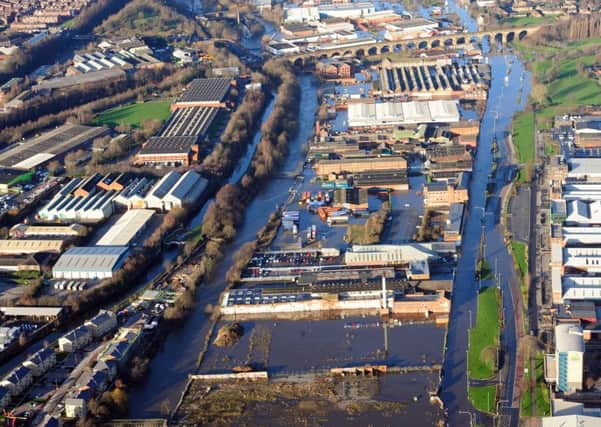Row over flood risk benefits of major tree felling along the Aire


One prominent critic reacted with bemusement, claiming the trees should stay because they contribute to natural flood management by slowing the water’s flow.
Professor Jonathan Grey, a research and conservation officer at the Wild Trout Trust also claimed that angling clubs, landowners and parish councils along the affected stretch of the river between Steeton and Bell Busk, Skipton have not been consulted about the felling which started this week.
Advertisement
Hide AdAdvertisement
Hide AdThe Environment Agency revealed its “major tree clearance operation” last week, saying it would improve the river’s flow and capacity, reduce the risk of blockages in the river and protect flood defences from damage.
It said a detailed ecological survey of the waterways had been carried out to inform the work, which is expected to last until the end of March and specifically targets the removal of trees, vegetation and debris deemed a potential flood risk.
Prof Grey, of Lancaster Environment Centre, told The Yorkshire Post: “I don’t agree that removing trees along the Aire will ‘improve’ flow - improve requires some definition.
“Trees in and alongside rivers are natural, they contribute to natural flood management by slowing the flow and actually reducing rapid conveyance of flood waters. If trees are in the river, they force the water to go round, under or over them, slowing it down. Those actions thereby create vital habitat diversity in the river and provide invaluable refuges for fish from predators and from floods.
Advertisement
Hide AdAdvertisement
Hide Ad“Removing all the trees will increase flow rate and increase the likelihood of higher flood peaks further downriver, thereby potentially increasing flood risk in built up areas which are pinch points in the river system.”
Homes and businesses in parts of Leeds and nearby Otley were badly affected when the River Aire burst its banks in the 2015 Boxing Day floods.
Prof Grey added: “Over 95 per cent (of trees along the Aire) I would wager survived last year’s unprecedented floods and have been in the same position for decades.
“Any trees that are potentially at risk of being dislodged could in many cases be cabled in place to a further secure anchor point so that they cannot break free, and their benefits are not lost.
Advertisement
Hide AdAdvertisement
Hide Ad“Removing them creates a gutter, not a river. Retaining them retains their ecosystem benefits.”
Environment Agency staff are due to meet Prof Grey to discuss his concerns.
An Agency spokesperson said: “The work we are carrying out on the River Aire will help us to reduce flood risk in the area. This involves a number of different methods, including coppicing, pruning, crown lifting, branch removal, debris clearing and the removal of trees where it is deemed to pose a potential flood risk. However, this is not a whole-scale clearance of trees and vegetation.
“We will be maintaining tree branches so that they are above the high water mark so that they cannot collect debris.
“We are working with ecological consultants and we will be leaving many of the trees for shade and areas of habitat.”
Prof Grey said the Agency’s response did not allay his concerns.